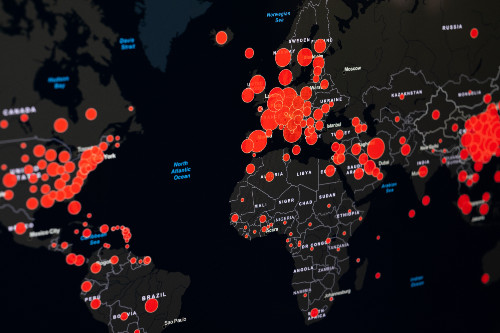Traditional health messaging is ineffectual in the age of COVID - a look at new strategies to tackle vaccine hesitancy and mask rejection
Health campaigns have become highly important and yet controversial following the outbreak of COVID-19, underscoring the need for innovative approaches. New research identifies the underlying conditions that reduce the efficacy of traditional advertising in broad crisis conditions. The authors propose a novel three-step strategy that is also relevant to a range of business sectors beyond the health market, as they operate in crisis ridden societies.
The COVID-19 pandemic and subsequent lockdowns have caused a global, national, local, and consumer crisis of colossal proportions. Most sectors of industry have had to adapt to the profound challenges the outbreak has presented, changing not only production methods, but also how they connect with their customers.
Building on underlying assumptions about social and institutional stability, as well as economic growth, public relations teams and advertisers are well-versed in responding to specific product or brand crises. However, these approaches are unsuitable for the broad breakdown in predictability and performance caused by COVID-19. How can advertisers continue to promote brands and companies effectively when the world around us is falling apart?
In the recently published paper Advertising in a Context Harm Crisis, Dr Thomas Robinson and Dr Ela Veresiu examine the disruption caused by major crises. The paper shows that crises destroy expectations towards the future we depend on in daily life. This has a deleterious effect on emotions, cognition, and identity formation that makes is almost impossible to connect with campaigns for mask wearing or vaccination. The researchers propose a three-step strategy to ensure the success of an advertising campaign during a crisis.
At the initial stage, the relevance of masks or vaccines are crowded out by negative emotions about what could have been. In response, successful messaging should guide the audience through all the stages of grief: denial, anger, depression, bargaining, and acceptance to facilitate emotional adaptation that brings health products into view for consumers.
Secondly, ambiguity about the future corrupts consumers’ ability to assess a product’s end benefits. The paper proposes that advertising should assist consumers in imagining a specific future world within which the use of a product will be enjoyed and planning a route towards this desirable future.
Lastly, as our old lives drop away due to disruption and new roles appear, crises push people into the labour-intensive process of negotiating identities. In a crisis, people change and become strangers to themselves and each other, which compromises social collaboration. The paper proposes that context harm crisis management through advertising can provide resources to assist individuals and communities in the often-unpleasant process of reconstructing a meaningful identity, and renegotiate what we are to each other.
Repetitive reminders to wear a mask or get a vaccine do not engage with the underlying ambivalence about the product brought about by crisis. The new research shows that the purpose of health messaging in a context harm crisis is less about the product, and more about swiftly establishing consensus around what will and will not happen in the future, to drive co-ordinated action in society as a whole. This provides the consumer with the resources to make sense of the health product and service on offer. Such a campaign would restore consumer hope by reframing the future as a desirable place to inhabit.
The paper Advertising in a Context Harm Crisis has been published in the Journal of Advertising.




